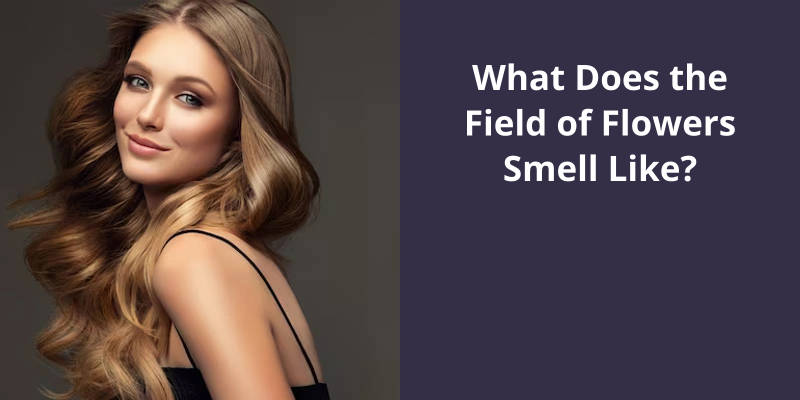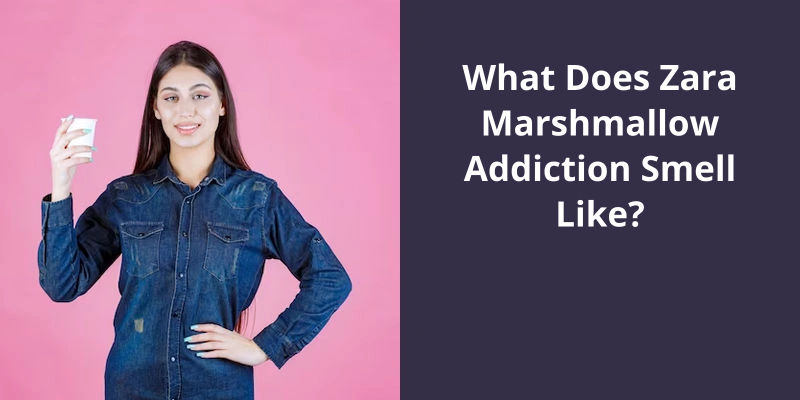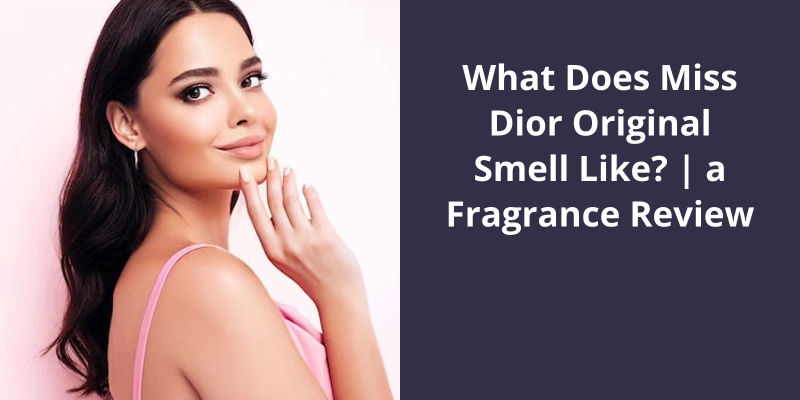What Does the Field of Flowers Smell Like? This question invokes a sense of curiosity and wonder, as one imagines themselves standing amidst a vast expanse of blooming flowers, inhaling deeply and indulging in the intoxicating aroma that fills the air. The fragrance dances with the delicate essence of peony, a prominent and beloved flower that exudes femininity and elegance. As the scent wafts through the air, it carries with it a sense of freshness, reminiscent of a spring morning and the awakening of nature. The field of flowers, with it’s myriad of blossoms, brings a medley of scents, from the sweet and heady fragrance of roses to the airy and delicate notes of lilies. Field of Flowers, a fragrance launched in early 2010, captures the essence of this enchanting scent, allowing individuals to carry a piece of this idyllic landscape with them. Available in bottles of 60 ml, it encapsulates the essence of a field of flowers, unveiling a bouquet of captivating and alluring aromas that ignite the senses and evoke memories of joy, tranquility, and the marvels of nature.

What Do You Smell When You Smell a Flower?
When you lean in to smell a field of flowers, what do you actually smell? The answer lies in the complex world of floral chemistry. Flowers, in their quest for survival, produce a wide array of chemicals in their blooms that create their signature fragrances. These scents play a critical role in attracting pollinators and warding off predators.
The captivating fragrance of a flower is the result of a precise mix of volatile compounds. These compounds are released into the air and serve as chemical signals for various organisms. For example, bees and other pollinators are attracted to flowers by specific scent molecules, indicating the presence of nectar and pollen. This mutually beneficial relationship ensures the flowers survival through pollination.
Interestingly, the chemicals responsible for a flowers scent can also act as a defense mechanism. Some flowers produce volatile compounds that deter herbivores or insects from feeding on them. These chemicals can have a repulsive or even toxic effect on potential predators, ensuring the flowers survival by warding off potential harm.
When it comes to the best smelling flowers, there are numerous contenders that captivate our senses with their alluring fragrances. From the delicate aroma of gardenias and roses to the intoxicating scents of lilies and jasmine, each flower possesses it’s own unique and captivating smell. Other contenders like magnolias, freesias, honeysuckles, and lavender also offer delightful fragrances that can transport us to a world of tranquility and bliss. With so many options to choose from, it’s difficult to crown just one flower as having the best smell. Let’s explore each of these fragrant blossoms in detail and appreciate the captivating scents they’ve to offer.
Which Flower Has the Best Smell?
When it comes to the field of flowers and their exquisite scents, gardenias are widely regarded as some of the best smelling flowers. The delicate and sweet fragrance of a gardenia can transport you to a tropical paradise, filling the air with a mesmerizing aroma. Similarly, roses are beloved for their enchanting scent that’s often described as romantic and timeless. With different varieties offering their own unique fragrance, roses have cemented their place among the top contenders for the best smelling flowers.
Lilies are another popular choice for their captivating scent. With their large, showy blooms and enticing fragrance, lilies can fill a room with a sense of elegance and sophistication. Additionally, magnolias are renowned for their wonderful fragrance. The scent of a magnolia flower is often described as citrusy, floral, and fresh, bringing a delightful aroma to any garden or floral arrangement.
Jasmine is yet another flower that’s celebrated for it’s incredible scent. With it’s heady and intoxicating fragrance, jasmine can create a sense of calm and tranquility, transporting you to a magical oriental garden. Freesia is also known for it’s sweet and refreshing scent.
Honeysuckle is a much-loved flower for it’s delightful smell that’s reminiscent of summer and childhood memories. It’s intoxicating fragrance can fill the air and attract bees and hummingbirds, making it a favorite addition to gardens. Lastly, lavender, with it’s soothing and comforting scent, is widely cherished for it’s calming properties. It’s distinctive aroma is often associated with relaxation and wellness, making it a popular choice in aromatherapy and home fragrances.
Wisteria: Wisteria Is Known for It’s Cascading Clusters of Flowers, but It Also Has a Wonderful Fragrance. The Scent of Wisteria Is Often Described as Floral and Slightly Spicy, With Hints of Lavender and Vanilla.
- Wisteria is known for it’s cascading clusters of flowers
- It also has a wonderful fragrance
- The scent of wisteria is often described as floral and slightly spicy
- It’s hints of lavender and vanilla
Source: 12 Best Smelling Flowers in the World
Studies have shown that smelling flowers can have a positive impact on brain function. The aromas emitted by flowers have the ability to engage our brain chemistry, influencing how we process incoming information. Interestingly, our brain’s response to smells can be influenced by our personal preferences and associations, ultimately affecting how we perceive and handle stimuli.
Is It OK to Smell Flowers?
Did you know that it’s perfectly okay to smell flowers? In fact, smelling flowers can actually give your brain a boost.
The smells that people enjoy or dislike are subjective experiences that have a profound effect on the brain. When you encounter a scent that you find pleasing, such as the sweet fragrance of a field of flowers, it can create positive associations in your brain. These associations can then influence how your brain handles incoming information.
For example, lets say you’ve a favorite flower, like a rose, that you find particularly pleasing. The act of smelling a rose can release specific neurotransmitters in your brain, such as dopamine, that are responsible for feelings of pleasure and reward. This can create a positive emotional response and enhance your overall mood.
Studies have shown that exposure to pleasant scents, such as the smell of flowers, can improve memory, attention, and even creativity. So, the next time you find yourself surrounded by a field of flowers, go ahead and take a deep breath – it may just give your brain a refreshing boost.
So, embrace the beauty of nature and indulge in the wonderful fragrances that flowers have to offer – your brain will thank you for it.
How Smelling Flowers Can Improve Mental Health
Engaging in the act of smelling flowers has been found to have a positive impact on mental health. The fragrances released by flowers have the ability to uplift mood, reduce stress, and promote relaxation. This is because the scents of flowers can stimulate the brain to release endorphins, which are natural chemicals that enhance feelings of happiness and well-being. In addition, the act of simply stopping to smell the flowers can help to redirect focus, provide a moment of mindfulness, and create a sense of connection with nature. Overall, the experience of smelling flowers can serve as a simple yet effective way to improve mental health and enhance overall well-being.
Floral scent, also known as flower scent, encompasses the array of volatile organic compounds emitted by floral tissue, such as petals. These aromatic compounds contribute to various terms like aroma, fragrance, floral odor, or perfume.
What Is the Word for Floral Scent?
The word for floral scent is often referred to as aroma, fragrance, floral odor, or perfume. It’s the combination of all the volatile organic compounds (VOCs) or aroma compounds released by the floral tissue, such as flower petals. These compounds contribute to the unique and enchanting smell of flowers.
The composition of these compounds may vary among different flower species, resulting in an endless array of fragrances in the natural world. Some of these compounds are more common, such as linalool, which gives a sweet, floral scent often found in flowers like lavender and jasmine.
The intensity and quality of floral scents can also differ based on factors such as the time of day, weather conditions, and the maturity of the flower. Flowers tend to emit a more potent fragrance during the peak hours of the day and in warmer temperatures. Additionally, the development stage of a flower can also play a role in it’s scent, with some flowers emitting a stronger fragrance when fully bloomed.
Walking through a field of flowers is a sensory delight, as the air becomes saturated with the various floral scents. Each breath fills the nostrils with a symphony of fragrances, transporting us to a world of beauty and tranquility. From the sweet and delicate aroma of roses to the crisp and refreshing scent of freshly bloomed lilies, the field of flowers is a sensory paradise for those seeking a moment of olfactory bliss.
Floral Scents in Different Cultures: This Topic Could Explore the Significance of Floral Scents in Different Cultures and Traditions, Discussing How Certain Scents Are Used in Ceremonies, Rituals, and Everyday Life.
- Floral scents play a significant role in various cultures and traditions.
- These scents are utilized in ceremonies, rituals, and daily activities.
- They hold cultural and symbolic importance.
- Flower fragrances are often associated with specific meanings.
- These scents are used to create a pleasant and soothing ambiance.
- Certain cultures use floral scents in spiritual practices.
- They’re incorporated in traditional medicine and beauty rituals.
- Floral scents can be representative of a region’s biodiversity.
- Each culture may have unique preferences for specific flower scents.
- Understanding the significance of floral scents provides insight into cultural practices.
Conclusion
The scent of nature's bountiful blooms, delicately entwined in the air, evokes a sense of wonder and elation.





